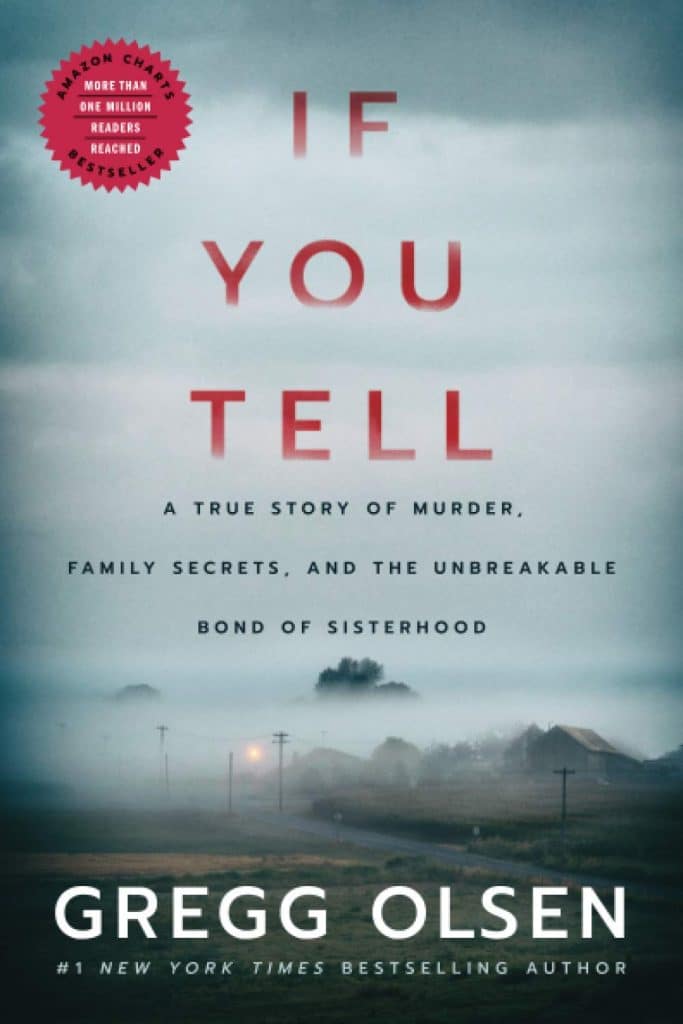In a dance as old as time, where imagination meets truth, the interplay of storytelling and nonfiction creates a captivating symphony of knowledge, blurring the lines between reality and the power of narrative. Gregg Olsen’s true crime novel, A True Story of Murder, Family Secrets, and the Unbreakable Bond of Sisterhood, masterfully combines storytelling techniques and nonfiction elements to convey the gripping tale of three sisters who endured abuse and sought justice.
By analyzing key passages, the reader can explore how the interplay of storytelling and nonfiction elements contributes to the narrative’s meaning. This essay will delve into the prevalence of these elements, discuss their role in shaping the story’s impact, and evaluate why this approach is the most effective in conveying the story and information.
Gregg Olsen skillfully incorporates elements of storytelling and nonfiction to engage readers and provide an authentic account of the sisters’ experiences. The storytelling elements employed by the author enhance the reader’s connection to the narrative and amplify its emotional impact. Through the use of present-tense narration, Olsen creates a sense of immediacy, enabling readers to experience the events alongside the characters.
For example, the quote “No one saw Nikki. No one except Sami. That remained a big secret” (Olsen 222) highlights the secrecy and suspense, drawing readers into the sisters’ hidden world. Olsen’s emotionally charged writing style further contributes to the story’s impact. By delving deep into the psychological states of the abusers and the sisters, the author elicits empathy from readers and fosters a better understanding of the characters’ struggles.
The quote “She’d been a part of something so terrible that, even though she’d been a child, it felt like a huge, ugly mark against her (Olsen 295) exemplifies the emotional weight of the sisters’ experiences and the lasting impact of trauma on their lives.
Another vital aspect of the interplay between storytelling and nonfiction elements is the exploration of societal themes and the book’s overall message. Through the incorporation of nonfiction elements, such as the mention of mental illness, addiction, and the failure of the justice system, the narrative sheds light on the larger issues prevalent in society.
The quote “She also launched into her thoughts about her mom’s dubious cancer diagnosis, a disease that had required constant medical attention for her entire childhood” (Olsen 235) reveals the book’s examination of the manipulation and deceit perpetrated by the abusers, exposing the lengths they went to control and harm their victims. By juxtaposing these nonfiction elements with the storytelling techniques employed throughout the book, Olsen creates a powerful contrast that amplifies the impact of the story.
The quote “Mom was weird, she thought. But Mom was Mom” (Olsen 245) encapsulates the complex dynamics between the sisters and their abusers. It highlights the struggle of reconciling their mother’s role with the heinous acts she committed, underscoring the psychological toll and confusion experienced by the sisters. Furthermore, the storytelling aspects of the book, such as vivid descriptions and character development, serve to immerse readers in the sisters’ journey and humanize their experiences. The quote “When Tori
hit puberty, Shelly instigated a new and very awkward routine. Once a month, she’d call Tori into the living room” (Olsen 249) portrays the distressing rituals inflicted upon the sisters, evoking a sense of discomfort and unease within the reader.
By skillfully intertwining storytelling and nonfiction elements, the author creates an impactful narrative that informs readers of the sisters’ story and prompts deeper reflections on the broader issues of trauma, abuse, and the resilience of sisterhood. Additionally, dialogue and character interactions bring authenticity to the narrative, enabling readers to connect with the characters on a personal level.
The quote “I’m not being difficult, Mom. It’s weird. It feels creepy” (Olsen 252) showcases Tori’s inner turmoil and her attempts to voice her discomfort, providing readers with a glimpse into the sisters’ harrowing experiences. While the storytelling elements evoke emotions and facilitate a deeper engagement with the narrative, the nonfiction elements in the book provide credibility and emphasize the reality of the events. Being categorized as a true crime biography, the book draws on real-life experiences, ensuring the events depicted are grounded in truth. This genre choice strengthens the readers’ trust in the authenticity of the story, highlighting the gravity of the sisters’ ordeal.
In conclusion, the interplay of storytelling and nonfiction elements in, A True Story of Murder, Family Secrets, and the Unbreakable Bond of Sisterhood allows Gregg Olsen to captivate readers and provide a powerful account of the sisters’ traumatic experiences. Through the use of present tense narration, emotional writing, dialogue, and nonfiction elements, Olsen brings the story to life, evoking empathy and understanding in readers. This combined approach proves to be the most effective way to convey the depth of the sisters’ struggles and deliver the information surrounding their quest for justice, leaving a lasting impact on readers’ hearts and minds.

